



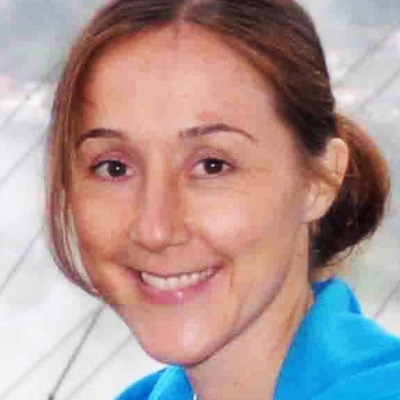 Eva Bartlett
Eva BartlettWestern regimes and their pliant media are involved in hysterical propaganda about Syrian and Russian air forces’ alleged bombing of Eastern Ghouta. Western reports talk of 400,000 civilians “trapped” there, the same figure that was used for East Aleppo in December 2016. Then it turned out that there were about 92,000 civilians—held hostage by the terrorists—that welcomed the Syrian army when it liberated East Aleppo.
Syria and Russia have set up humanitarian corridors for civilians to leave East Ghouta. The terrorists are preventing them from leaving. The Syrian government has also dropped leaflets—not bombs—telling people about the humanitarian corridors.
In order to understand the reality of East Ghouta, we reproduce this article by Eva Bartlett, a courageous Canadian journalists who has been in Syria on numerous occasions, unlike any of the Western media pundits that peddle State department or CIA delivered propaganda about the situation in Syria.
Eva has meticulously sourced her material.
By Eva Bartlett
On February 20, from Amman, Jordan, UNICEF Regional Director for the Middle East and North Africa, Geert Cappelaere, issued a statement of “outrage” titled: “The war on children in Syria: Reports of mass casualties among children in Eastern Ghouta and Damascus.”
The “statement” — consisting of blank lines with the preface “No words will do justice to the children killed, their mothers, their fathers and their loved ones” — dovetails with corporate media’s increasingly hysterical rhetoric on the Damascus suburb of Ghouta, which has been plagued with chemical weapons attacks for over four years, perpetrated by U.S.-backed proxies allied with the Nusra Front attempting to frame the Syrian government with war crimes.
UNICEF further wrote:
“We no longer have the words to describe children’s suffering and our outrage. Do those inflicting the suffering still have words to justify their barbaric acts?”
Where was UNICEF’s dramatic blank-lined protest when 200 civilians, including 116 children, were slaughtered by terrorist factions while in convoy from Kafraya and Foua in April 2017? These factions included Ahrar al-Sham (supported by Turkey and Saudi Arabia), al-Nusra (al-Qaeda), and factions of the Free Syrian Army. The Free Syrian Army was armed by the U.S. And, according to the words of former Qatari Prime Minister Hamad bin Jassim bin Jaber al-Thani, Qatar — with the support and coordination of Saudi Arabia, Turkey, and the U.S.—was from the beginning supporting armed groups, even al-Qaeda, in Syria.
This seemingly outraged UN statement has made the rounds in corporate media reports on eastern Ghouta, most of which cite the U.K.-based Syrian Observatory for Human Rights (SOHR), run from his home by a sole person, Osama Suleiman, who uses the pseudonym Rami Abdul Rahman. In its recent Ghouta reports, SOHR itself does not provide sources.
On February 22, in the UN Security Council, UN Emergency Relief Coordinator and head of OCHA, Mark Lowcock, spoke for just over 10 minutes about eastern Ghouta and “400,000 people besieged.”
Not once did he mention the designated terrorist factions within. These terrorist factions include: Jaysh al-Islam (Saudi-backed), Hayat Tahrir al-Sham (al-Qaeda), Ahrar al-Sham, and Faylaq al-Rahman (the main faction in Jobar, and reported to have received BGM-71 TOW anti-tank guided missiles).
The UN would garner much less public support and outrage if, instead of easily-misconstrued emotive statements, it showed training videos like this one depicting then-leader Zahran Alloush’s Army of Islam training in eastern Ghouta with their armored tanks. This is the reality of eastern Ghouta. Jaysh al-Islam is the group infamous for caging civilians, including women, to use as human shields.
The UN would garner less support still were the UN and corporate media to show videos of civilians like this woman cursing the armed groups, blaming them for hunger and for hoarding food, telling them to leave Ghouta.
With hindsight, we know now that in other formerly-occupied areas of Syria, like East Aleppo, Homs, Madaya, al-Waer, and elsewhere, when finally re-secured from terrorist factions, civilians in these areas spoke of terrorists hoarding food and medicine, and preventing them from leaving — holding them hostage as human shields.
It also transpired that the numbers the UN and corporate media were citing about eastern Aleppo’s population —250,000 to 300,000 – were highly inflated, double the actual numbers of civilians in eastern areas. As I wrote previously:
110,000 civilians registered at the Jibreen Registration center; another estimated 10 percent might have gone straight to stay with family instead; and according to the Red Cross, 35,000 people (“fighters” and their family members) were evacuated out of Aleppo. The total number was thus at most 150,000, most likely significantly lower.”
In his February 22 address, only once did the UN’s Lowcock address terrorists’ shelling of Damascus, saying: “shelling from eastern Ghouta is reportedly killing and injuring scores of civilians in Damascus City.”
Why reportedly? Why did Lowcock not take and read the testimonies of civilians as he claims to have done of civilians in eastern Ghouta? Damascus is far more accessible than al-Qaeda-occupied Ghouta: Lowcock could very easily travel to the Syrian capital and meet with some of the many civilians affected by the years of constant mortaring from terrorist factions in eastern Ghouta. Instead, he seems to prefer to repeat testimonies collected from afar, solely from and on Ghouta.
For weeks, Jaysh al-Islam, al-Qaeda, Ahrar al-Sham, and Faylaq al-Rahman have intensified their heavy-shelling of Damascus, intentionally targeting heavily-populated civilian areas of the city, including schools, homes, and crowded public spaces.
These shellings are breaches of the de-escalation zones agreement of May 2017, co-signed by Russia, Turkey and Iran. Eastern Ghouta is one of the four areas included in the agreement of cessation of hostilities. According to the article “6th Astana Process Talks Produce De-Escalation Zone Agreement”:
The guarantor countries noted ‘progress in the fight against terrorism and elimination of ISIL, Jabhat al-Nusra and all other individuals, groups, enterprises and organisations associated with Al-Qaida or ISIL as a result of the functioning of these de-escalation zones’ and confirmed their determination ‘to take all necessary measures to continue to fight them both inside and outside de-escalation zones.’”
Jaysh al-Islam — whose political leader, Mohammed Alloush, was supposed to participate in the May and subsequent 2017 Astana peace talks — is one of the factions attacking Damascus. The Syrian website Muraselon reported that the February 23 bombing of Damascus, which killed at least one civilian, was a powerful missile, likely fired by Jaysh al-Islam. The article referred to the terrorist group’s own social media bragging about possessing and intending to fire said missile on Damascus. That deserves a little outrage and more than a passing comment.
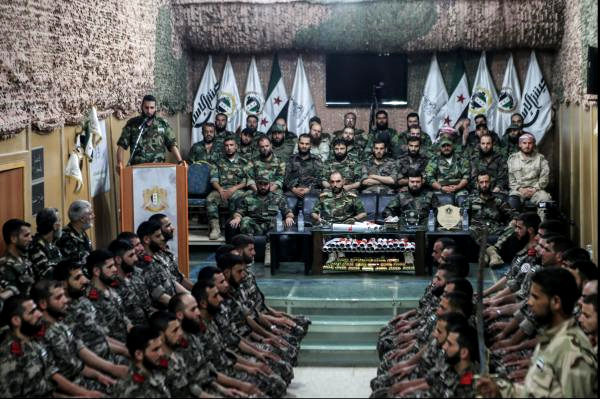
Following the Security Council meeting, Syria’s permanent representative to the UN, Ambassador Bashar al-Ja’afari, spoke to the press, noting Mr. Lowcock’s lack of objectivity in his Security Council statement. Ambassador al-Ja’afari said:
We have an official letter from the Resident Coordinator in Damascus, the chair of OCHA in Syria, saying that during 2017, OCHA — with the cooperation of the Syrian government, and Syrian Red Crescent, and International Committee of the Red Cross — have provided humanitarian assistance to 2.3 million people.
Mr. Lowcock denied this information, while we have it in written form coming from the head of OCHA in Damascus. So, something is wrong. Either these people here in New York don’t read what they get from … their own people in Damascus, or they mislead the Security Council members about what’s going on in Syria.”
He also corrected the lexicon of a “stifling siege,” saying:
[This] is not consistent with the reality on the ground. Commercial trucks have been moving constantly between Damascus and east Ghouta. The Syrian government has been facilitating aid to eastern Ghouta, and medical evacuations to hospitals in Damascus. The UN is ignoring video footage posted by these terrorist groups showing women and children pushed into metal cages on the streets.”
Regarding the heavy shelling of Damascus that Mr. Lowcock stated is reportedly happening, at a Security Council meeting one week prior, Ambassador al-Ja’afari cited the over 1,000 shells from eastern Ghouta that had targeted Damascus. On February 22, al-Ja’afari stated that the number of shells on Damascus was now over 1,200, noting that 8 million people in Damascus were at risk.
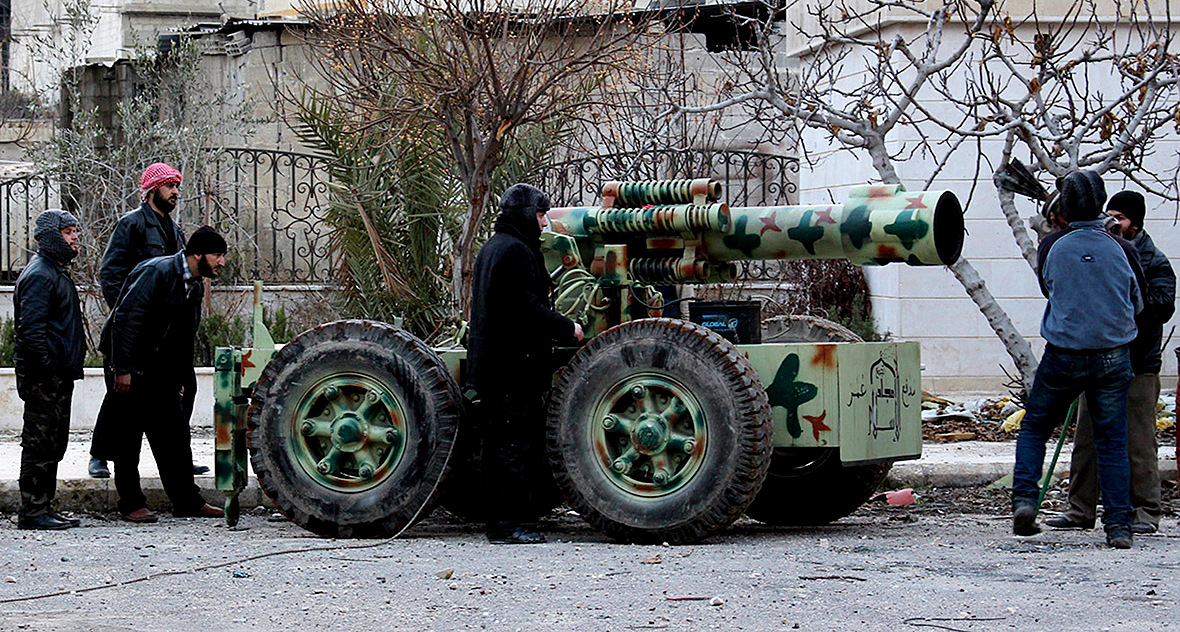
According to Syrian state media, SANA, the following terrorist attacks on Damascus have occurred in the past week:
The February 23 shelling of Damascus killed a Syrian doctor: Dr. Hassan Haj Hassan, an anesthesiologist and a professor at the Institute of Health Technology in Damascus. He was killed by #EGhouta terrorist shelling of Damascus.
In his latest address at the UN Security Council, Ambassador al-Ja’afari noted that the main headquarters of the Red Crescent in Syria, based in Damascus, was targeted with 10 missiles, originating from Ghouta.
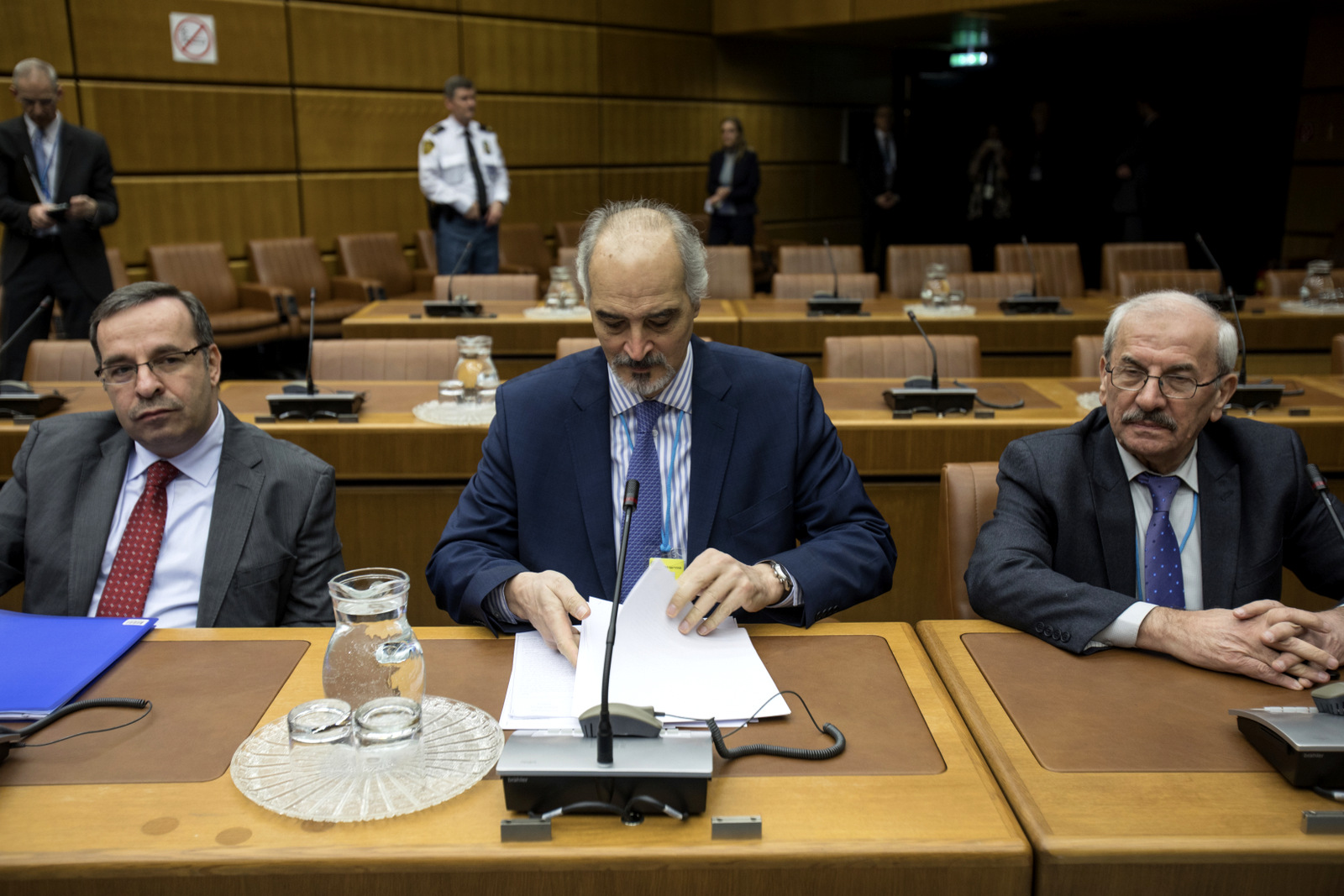
In trying to relate Syria’s side of the story in the United Nations, Ambassador al-Ja’afari was initially prevented from doing so. In his subsequent address to the press, he noted:
The President of the Security Council, the Ambassador of Kuwait, acted irresponsibly today by trying to prevent me from speaking, while the meeting is on Syria. This irresponsible behavior coming from the President of the Security Council in a meeting allocated to the situation in Syria reveals also that Kuwait is not — the Kuwaiti delegation — is not up to the responsibility it is assuming as President of the Security Council, because this irresponsible behavior works against the rules and procedures of the Security Council. The shortage of the moral behavior of the Kuwaiti ambassador found a crystal-cut answer by the Russian ambassador, who corrected him and said you have no right whatsoever to prevent the Syrian ambassador from addressing the council.”
Censorship at the UN has happened previously. In early 2015, after interviewing the Syrian Ambassador, I wrote, quoting him:
The British ambassador cut me off one time while I was speaking. He said ‘you have exceeded four minutes.’ I said, ‘Who gave you the right to fix four minutes? I am a member of a concerned party, and I have the right to explain.’ To justify his wrongdoing, he also cut off the Iraqi ambassador after me. We were the only two ambassadors speaking at that session, and it was on Syria and Iraq. The issue was on terrorism in Syria and Iraq, and he cut off both of us after four minutes!”
In a subsequent article, I wrote of the repeated cuts to the Syrian Ambassador’s video and microphone feeds, also noting the attempted censorship of Syria’s Minister of Foreign Affairs:
In January, 2014, at the Geneva II conference on Syria in Montreux, Switzerland, Foreign Affairs Minister Walid Muallem was himself cut off by none other than the Secretary-General, Ban Ki-moon.
Pointing out the ridiculousness of the situation, Muallem noted: ‘You live in New York, I live in Syria. I have the right to give the Syrian version in this forum. After three years of suffering, this is my right. You spoke for 25 minutes. I need at least 30.’ While Ban interrupted Muallem’s speech, asking him to ‘wrap up in just one or two minutes,’ the Syrian Minister refused to be silenced and did eventually finish his speech.”
Regarding some of the other instances of UN censorship of Ambassador al-Ja’afari, in that same article I wrote:
Correspondent Nizar Abboud…says the cuts are not due to ‘technical problems,’ but instead often done ‘by senior officials at the United Nations.’
Matthew Lee, a journalist with Inner City Press (ICP) reported on an April 5, 2012 feed cut, noting that the speeches of the then Special Envoy for Syria, Kofi Annan, as well as the (Qatari) President of the General Assembly (GA) and Ban Ki-moon were all broadcast on UN television. However, ‘just as Syria’s Permanent Representative Bashar Ja’afari took the floor to respond, UN TV went dark. When the session was over several Permanent Representatives were critical of what they called ‘the PGA’s use of the UN for Qatar’s foreign policy.’
…The Syrian Ambassador was again cut out of the feed on June 18, 2014. ICP’s Lee reported that on June 20 he was told by the same Dujarric regarding the June 7 cut that [in Lee’s words], in fact the error in 2012 was been [sic] to allow Ja’afari to speak AT ALL on UN TV. He said the arrangement was that Ban and the Qatari PGA could speak, then the UN TV was supposed to go off.’
Following the June 2014 Syrian elections, international representatives who had observed the elections in Syria convened at the UN to report back. Roughly five minutes in, after Ambassador al-Ja’afari had opened the meeting and thanked the Secretariat for facilitating it, the webcast feed was cut. Ironically, the Ambassador had stressed he wanted to leave ‘enough time to give you the right picture of the Syrian landscape that was prevailing during elections. They are eyewitnesses.’”
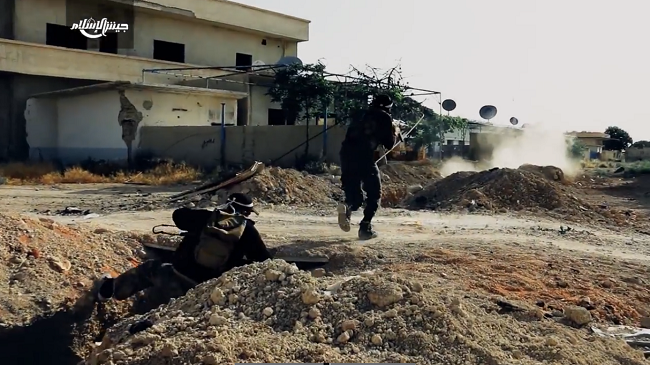
The UN’s Lowcock humanized the suffering in eastern Ghouta, and it cannot be denied there is suffering there, where the aforementioned terrorist groups embed in civilian areas only to hold civilians hostage, and are the cause of the military siege and targeted strikes on Ghouta.
Yet, he and the media mentioned only in passing, and skeptically, the relentless shelling of civilian areas of Damascus and the surrounding countryside, dehumanizing the civilians of Damascus — just as corporate media dehumanized the civilians of Aleppo, then under the relentless bombings and sniping of al-Qaeda and other terrorists’ occupying the city’s eastern areas.
In Aleppo in November 2016, the head of forensics, Dr. Zaher Hajjo, told me (on a day of intense terrorist bombings that killed 18 civilians and injured over 200) that in the past five years 10,750 civilians had been killed in Aleppo, 40 percent of whom were women and children. He said that in the past year alone, 328 children had been killed by terrorist shelling in Aleppo, 45 children killed by terrorist snipers.
In April 2014, I visited the French Hospital in Damascus, which was treating some of the over 60 children who had been injured by terrorists’ shelling of their school, which also killed one child. Also at the hospital was the BBC’s correspondent, Lyse Doucet. While she promised to give an honest account of the targeting of these children, her report instead read:
They’re believed to be fired by rebels, but the government is also accused of launching them into neighborhoods under its control. So brutal is this war that nothing is considered unthinkable…”
In February 2015, I visited Damascus’ University Hospital, documenting just some of the children maimed and critically injured by such terrorist attacks — and, a year prior wrote about my own experiences in the intense shelling of Damascus, where I stayed several weeks — and, since then, have met victims of terrorist shelling of Old Damascus.
With access to numerous sources on these incessant and deadly mortar and rocket attacks and the Syrian ambassador’s repeated statements on this at the UN, the United Nations nevertheless chooses to obfuscate on the intensified shelling of civilian areas of Damascus and elsewhere in Syria, and instead endorse the war propagandists.
On February 22, UNICEF tweeted a New York Times article featuring “media activist” Firas Abdullah. Abdullah is not the neutral media source portrayed. Following the December 2015 killing of terrorist Zahran Alloush, then-leader of Jaysh al-Islam, Abdullah posted his eulogy for Alloush, calling him a “beautiful martyr.” This is the person whom the Times chose to portray a human face of Ghouta, retweeted by UNICEF.
Also on February 22, the UN body tweeted a CNN report citing the SOHR, and of course the UNICEF blank statement of outrage, in the cyclic fashion that is typical of regime-change war propaganda reinforcing itself.
On February 21, UNICEF tweeted a Newsweek photo slideshow titled after UNICEF’s own blank statement of outrage.
The February 20 tweet of the blank UNICEF statement included #EasternGhouta, but no hashtag for Damascus. Surely an oversight…
Their February 19 tweet links to an article on the Bana al-Abed of Ghouta, Muhammad Najem, whose Twitter account began in December 2017 and has nearly 5,000 followers. Expect that number to skyrocket. Expect a memoir to follow.
A UNICEF February 19 tweet on Ghouta links to war propagandist Louisa Loveluck’s article, reporting from Beirut, Lebanon.
If it isn’t already clear, UNICEF is participating in war propaganda against Syria, reporting and endorsing one very exaggerated and not substantiated side of the story, disappearing another very real side.
This is not the first time the UN has covered up terrorists’ crimes against Syrian civilians. In October 2016, I wrote of UNICEF’s unproven claims of an aerial attack on an Idlib school, in which UNICEF decried it as possibly “the deadliest attack on a school since the war began more than five years ago.” As I reported, UNICEF overlooked numerous documented deadly attacks on schools:
On October 1, 2014, terrorists’ car- and suicide-bombed the Akrama Al-Makhzoumi School in Homs, killing at least 41 children by conservative estimates, or up to 48 children by other reports, along with women and other civilians.”
I further noted:
On October 28, 2016, RT reporter Murad Gazdiev reported from Aleppo on the latest attacks by Western-backed terrorists on a school in the city. At the time of the report, at least six children were reported killed by a Hell Cannon-fired gas canister bomb which struck a school in Ḩadaiq al-Andalus. From an Aleppo hospital, Gazdiev reported:
‘The rebels launched the rocket at 10 in the morning. Seconds later it hit the National School of Aleppo… Three of the children died on the spot…. blood and pieces of them sprayed on the walls. The victims, six children, ranged in age from 2 to 12. In some cases, doctors weren’t sure if they’d put the right body parts with the correct bodies. Three of the dead children were siblings: two brothers and a sister. Their father was beyond consolation. His mental stability had been torn apart.’
This statement was given over footage of a devastated father kissing the corpses of his children.”
In January 2016, I wrote of OCHA’s selective tweeting around the terrorist-occupied village of Madaya, obfuscating the terrorist-besieged Idlib villages of Foua and Kafraya.
Honest reporters like Murad Gazdiev entered Madaya in January 2016 and confirmed that food and medical aid had indeed entered. He spoke with residents who complained of the armed groups stealing this food.
When I went to Madaya in June 2017, I spoke with civilians there who stated that vast amounts of food and medical aid entered the area, but they had no access to it, as Ahrar al-Sham, al-Nusra and co-extremists holding the village hoarded the food and sold it at extortionist prices. I also saw prisons use to hold, and sometimes torture, civilians before their trials in terrorists’ courts. I also saw these in eastern Aleppo and in al-Layramoun, in the city’s northwest. When eastern Ghouta is finally secured, it won’t be surprising to learn that schools, hospitals, and/or homes were turned into prisons to hold the civilians for whom the UN and corporate media feign concern.
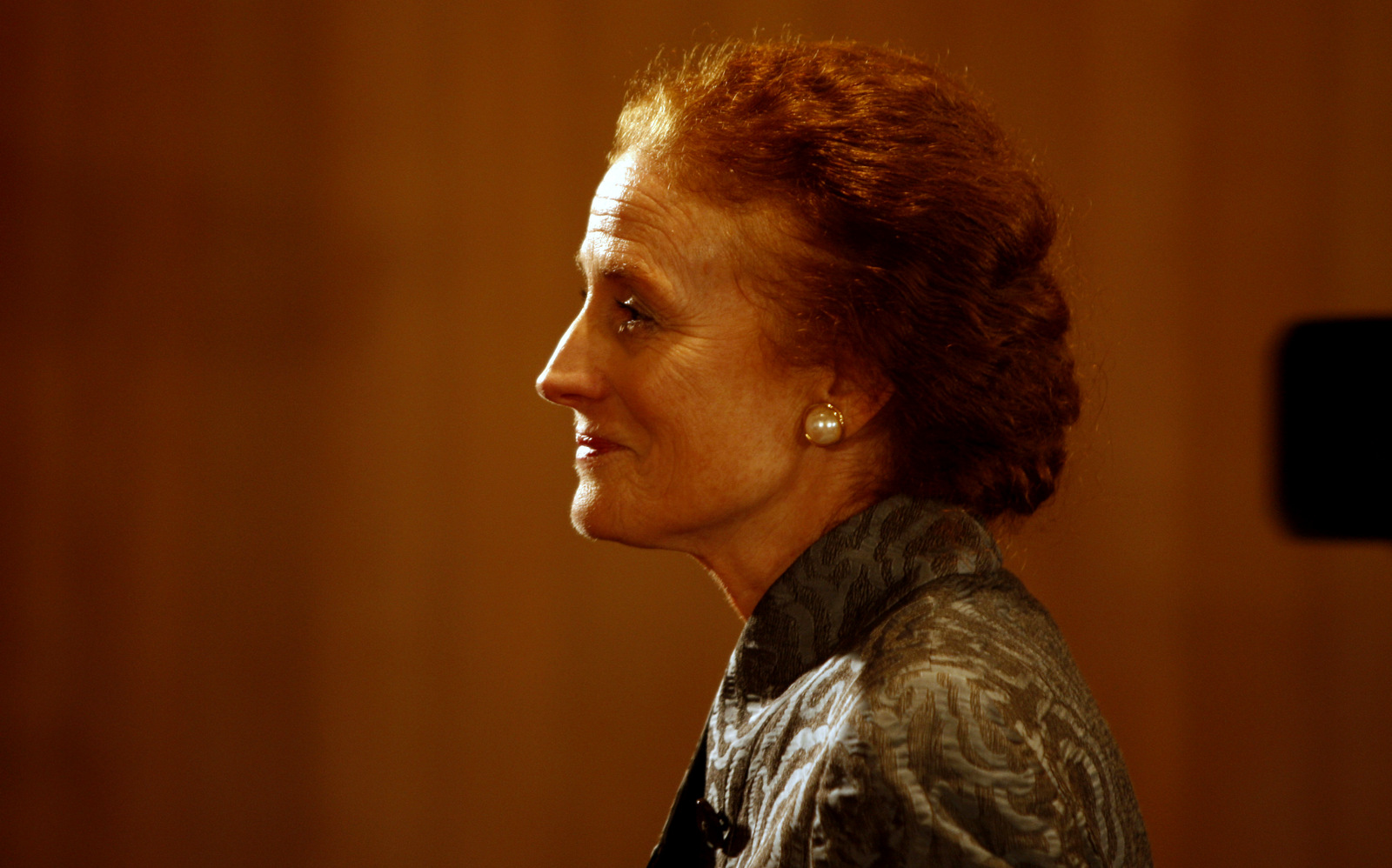
According to UNICEF, the current executive director, Henrietta H. Fore, was formerly Administrator of USAID, Chief Operating Officer for the U.S. Department of State, and Director of the United States Mint in the U.S. Department of Treasury.
The prior UNICEF executive director, Anthony Lake, was national security advisor to President Clinton, and was nominated to be the director of the CIA.
According to Telesur, Lake played a significant role in mass starvation in Somalia in 2010-2012, under-budgeting food aid, budgeting “10 cents a day per person to feed a million internally displaced persons.” Telesur reported that Lake also “admitted publicly that he knew about and did nothing to prevent the genocide in Rwanda, something he ‘regretted.’”
In Yemen, the UN is suspected of having smuggled in two CIA agents, as reported in 2015 by journalist Nizar Abboud, and surprisingly in 2017 by The New York Times.
UNICEF executive directors who formerly worked for USAID, the U.S. State Department, even Director of the United States Mint in the U.S. Department of Treasury: it seems that UNICEF’s role is less about humanitarian aid and more about being the humanitarian propaganda arm of Washington.
We should, indeed, feel sorrow for any civilian casualties in the U.S./U.K. and allies’ war on Syria. However, after years of the most egregious war propaganda on Syria, we should also exercise caution about the latest stories, be they from unsourced SOHR reports or the UN itself.
Remember, Omran Daqneesh was once depicted widely as the face of Syrian suffering. As it turned out, the entire story Western media and agencies told was false, based on unreliable sources.
Recall that the humanitarian agency MSF once insisted that Syrian or Russian airstrikes had destroyed — reduced “to rubble” — a hospital that MSF supported. This turned out to be utterly false.
Unlike MSF, unlike the most of journalists who reported lies around Omran Daqneesh, I did go to see the intact Quds hospital, and met Omran and his father, who told me everything the media had reported on his son was false; the media had exploited his boy. Both MSF and corporate media lied about these stories, and their lies were used to call for further Western intervention in Syria.
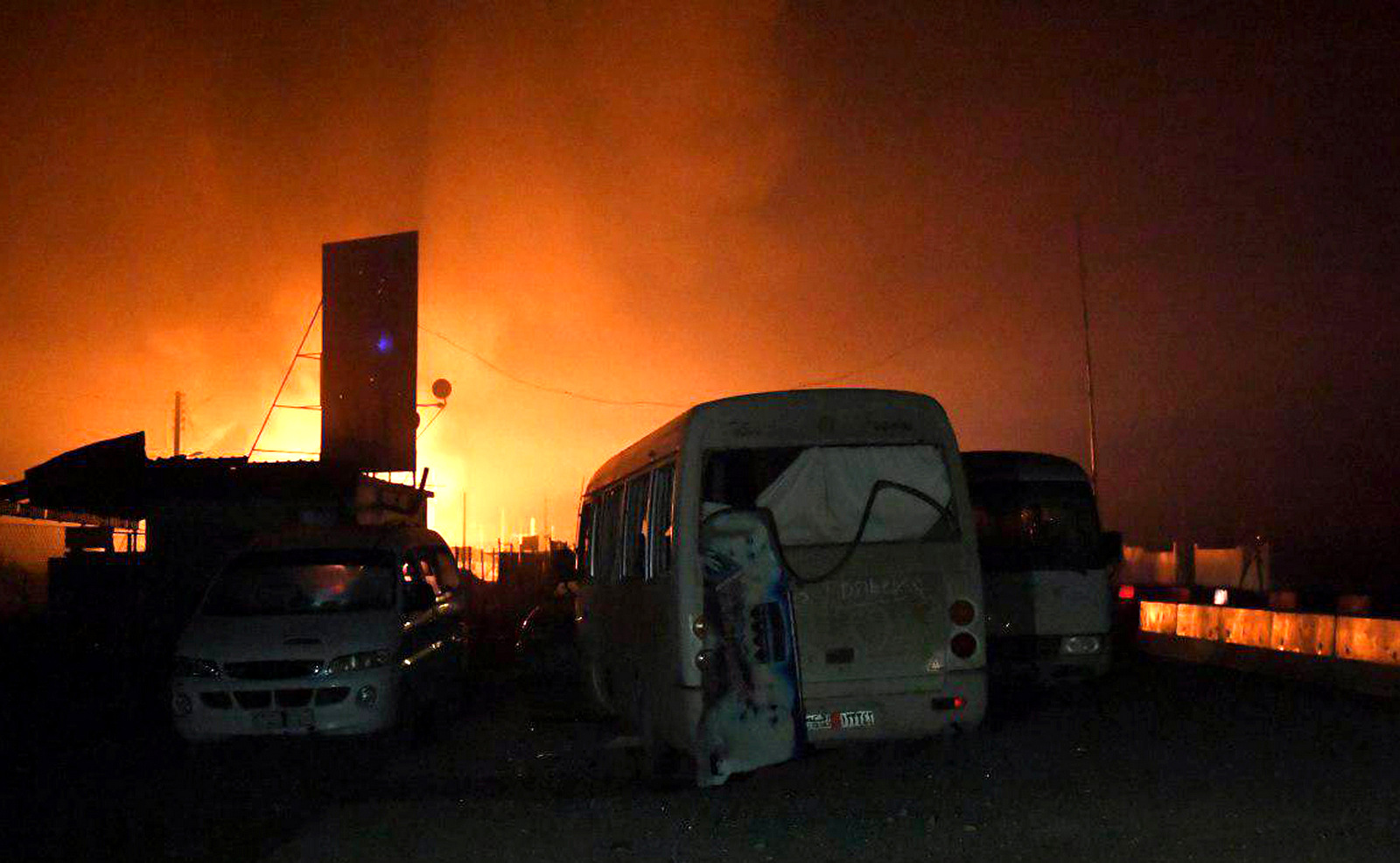
While UNICEF on January 26 noted having received “alarming reports” regarding children’s deaths in Afrin, it hasn’t thus far expressed outrage at the Turkish murder of civilians in the northwestern Syrian town. On February 20, SANA reported:
Entering its 32nd day, the Turkish aggression continues to claim more civilian casualties and causing material damage to properties.
Medical sources at Afrin Hospital told SANA that so far, 175 civilians were killed and more than 450 civilians, most of them children and women, were injured due to the continued assault on civilians’ houses and infrastructure.”
Contrast the nonspecific and tame title of the January 26 UNICEF statement, “UNICEF statement on the escalating violence in Syria,” to the emotive language of February 20, riding on the coattails of corporate media hysteria around Ghouta:
The war on children in Syria: Reports of mass casualties among children in Eastern Ghouta and Damascus; … No words will do justice to the children killed; … We no longer have the words to describe children’s suffering and our outrage; … barbaric acts …”
The UN has yet to issue an updated statement of concern regarding the latest Turkish bombings of Afrin.
In UN humanitarian chief Lowcock’s February 22 address, he spoke of “the killing of civilians and the destruction of entire cities and neighborhoods.”
However, he didn’t mean the killing of hundreds (a lower estimate) or even thousands of Syrian civilians by the U.S.-led coalition, illegal in Syria — the latest being 12 civilians, “mostly women and children,” killed in residential neighborhoods in Hajin town in Deir Ezzor eastern countryside on February 21.
One day prior, Syrian media reported the deaths of “at least 16 civilians, including nine women,” in al-Bahra village, Deir Ezzor countryside, noting, “the death toll is likely to rise as a number of civilians were injured and some of them are in critical condition as a result of airstrikes…”
A UN press release on Lowcock’s statement cited him as saying: “You can still save lives in eastern Ghouta – and elsewhere in Syria. I urge you to do so.”
But this is precisely what Syrian officials have been attempting to do, with offers of amnesty, safe transport of out of Ghouta, and the provision of medical and food aid.
Recently, independent researcher Hadi Nasrallah tweeted (in a long thread on Ghouta):
Even After 7 years of failed negotiations with terrorists for the sake of civilians held in Eastern Ghouta, the Syrian government dropped flyers and maps on the terrorist-held city to give details for civilians on how to flee areas with high tensions and guaranteed them safety”
Al Masdar News reported:
…eight projectiles struck the Al-Wafideen camp site where the Syrian Army has set up an evacuation point for civilians attempting to escape militant-held areas of East Ghouta.”
As with Aleppo, a humanitarian corridor has been established to enable eastern Ghouta residents to leave the district. However, given that terrorists repeatedly shelled humanitarian corridors in Aleppo (including a corridor road I stood on in November 2016), holding civilians hostage, it is quite likely terrorists in eastern Ghouta will do the same.
Yet, in the end, the combination of humanitarian corridors and Syria’s offer of amnesty and reconciliation enabled the exit of terrorists and return of life in Aleppo. As of August 2017, over half a million displaced Syrians returned home, the vast majority internally-displaced.
In Madaya, al-Waer, Homs, and many other areas of Syria, the same deals as in Aleppo enabled the return of stability and life.
In addition to opening the humanitarian corridors, the Syrian army has dropped leaflets over eastern Ghouta informing civilians of designated safe exits for civilians to leave the district to safety in Damascus.
These are the types of actions the UN should be focused on and supporting, not repeating war propaganda that only confuses and prolongs the fight for peace.
(First published by MintPress News, February 26, 2018 and reproduced in Global Research, February 27, 2018)
